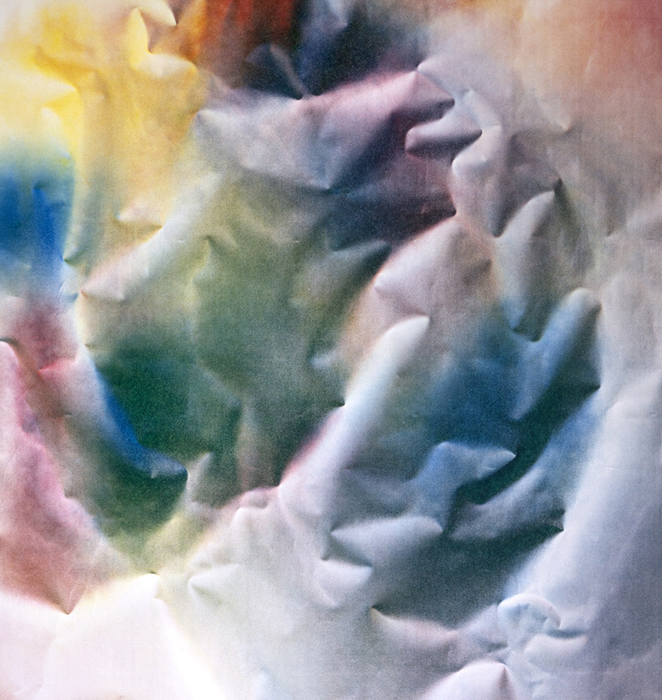ZITZWITZ – RICHARD
Jean-Luc and Takako Richard present Thomas Zitzwitz’s first solo exhibition entitled I’ll be your Mirror from September 4 to October 30, 2021. Master of gun painting, a fruitful dialogue can be established between his paintings and those of Rémy Hysbergue, Kiyoshi Nakagami, Hervé Heuzé, Rainer Gross, Dennis Hollingsworth…
The text below by Barbara Hess entitled «Hommage to the Spray Gun» is an excellent introduction to his works.
„Everything folds in its own way, the rope and the stick, but also the colors that are distributed according to the concavity and convexity of the luminous ray, and the sounds, all the more acute as the trembling parts are shorter and more tense.“
Gilles Deleuze, Le Pli. Leibniz et le baroque, Paris 1988
In the field of music a suite is an order of pieces with a common programmatic theme. Under the title of the exhibition Suite for Spray Gun Thomas Zitzwitz brings together a series of paintings that were made using a spray gun – a technical tool, which is normally used in industry for the application of lacquers. The other common point of exponates is that the color is painted on a canvas irregularly folded. Only after the canvas is mounted on a canvas.
The process of Spray Paintings can be characterized by a directed chance, since the result of this process, which is of a directed part and another random part, is only visible when the canvas becomes a flat surface mounted on a chassis – similar to the material of a film, which must be chemically developed after exposure. First of all, with the help of adhesive tapes, we define an area on the coated or raw canvas spread on the floor. Then the artist prepares this one, in a way like a piano by John Cage, by manipulating the fabric and from time to time placing objects under the canvas to design draperies. The surface thus prepared is treated with the spray gun – monochrome or polychrome – on all sides, to such an extent that the parts which are behind a crest and which are not affected by the paint mist remain empty, as the color becomes more pronounced on other parts, and where the absorption capacity of the canvas is exhausted, lakes of colors are formed.
The association of a landscape in relief unites some Spray Paintings with compositions of Abstract Expressionism such as the monumental Mountain and Sea (1952) by Helen Frankenthaler – an effect, which is countered in some works by bands painted on the edges of the image field, which disturbs the spatial effect and which instead emphasizes the very process of painting.
It goes without saying that Thomas Zitzwitz is not the first artist in the history of painting who experiments with folding. Clearly in the discourse of painting after Modernism there is no longer any question of originality or authenticity but of a relationship of difference and productive divergence. The title Suite for Spray Gun is also understood as a reference to the Hungarian exile Simon Hantaï (1922 – 2008) who is a historical representative of folding.
In 1948 Hantaï left as an art student the territory of Socialist Realism and settled in Paris, the world capital of art of that time. There, between 1969 and 1973, was born his group of works Etudes (in music a designation for a musical composition written to serve to exercise the skill of the executant): All over large format executed on canvases folded several times, where the light, unpainted parts evoke an interlacing of bamboo leaves on a monochrome background.
Notably Thomas Zitzwitz’s Spray or Crumple Paintings mark a difference in his own artistic practice. In the second part of the 90s he had realized installations of video, sound and odors. Towards the end of this Decade he concentrated more and more on the paint by using interference pigments, which are applied using a scraper in a transparent acrylic gel. The light- and color-saturated surfaces of these paintings, which are often separated by exact horizontal edges into two or three differently structured parts, change their colors according to the viewer’s
point of view and the light situation. Their hybrid and atmospheric character – which is not only chromatically unstable, but also changes between the type of painting and object – was more evident in 2007 in the artist’s book Moleskine Orangée. There the confrontation with Kodachrome photos dating from the artist’s childhood in the South of France transformed the vivid paintings into abstract images of memory.
A little later, in early 2008, Thomas Zitzwitz started working on the first Spray Paintings: It was also a deliberate change of the shiny and thicker surface“paint with pigments interfering with a more formal and less associative image effect”, as he formulated in his e-mail communication with American artist David Reed.
The relationship to the film mentioned at the beginning is for the Spray Paintings – whose visual appearance develops “only by straightening on the chassis – still significant in other respects. One of their most remarkable qualities is their illusionist and almost phototoréalist depth, since the three-dimensional aspect of the folding is preserved as a trace in the color applied on the canvas stretched. In fact, we can refer to them – like the images of photography or film – with the philosopher Charles S. Pierce as “indexical”.
Because between the spatial arrangement of the canvas on the floor of the studio and the visual appearance of the Spray Paintings as a two-dimensional painting exists a relationship of physical causality – similarly as in the association between the photographed object and its photographic image or cinematographic.Since bending is a transitional form between continuity and rupture – which, as Deleuze writes, is appropriate to divide differences, incompossibilities, disagreements, dissonances […] into as many possible worlds“– The Spray Paintings by Thomas Zitzwitz constantly change between illusionism and self-reference: a moment of instability and ambiguity, which remains essential for his pictorial approach.
